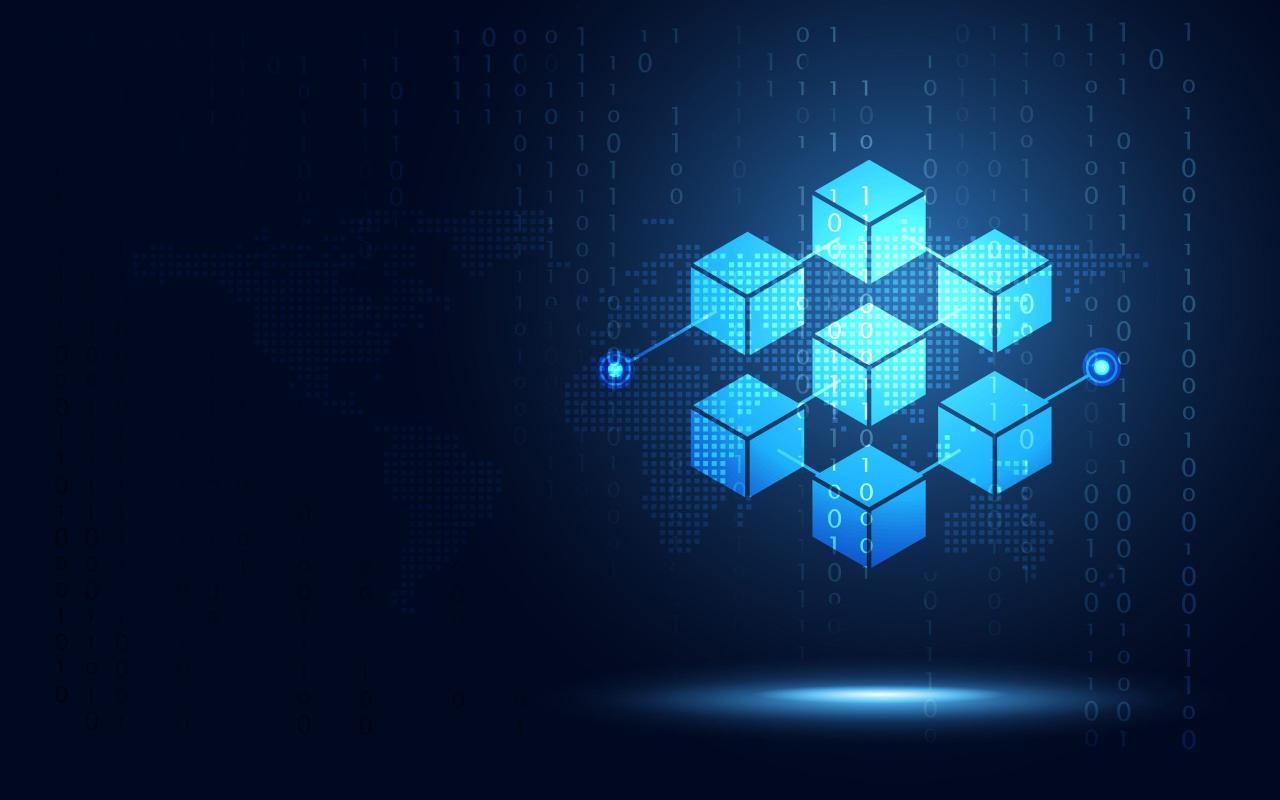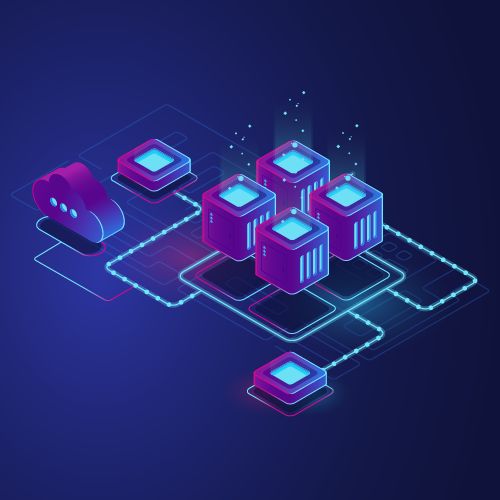The internet, as we know it, is undergoing a profound transformation. What began as a decentralized network evolved into a highly centralized landscape dominated by a few tech giants. However, a new paradigm is emerging, promising to reclaim the web’s foundational principles: Web3 decentralization. This isn’t merely an incremental update; it’s a fundamental reimagining of how we interact, transact, and govern online. By leveraging technologies like blockchain, cryptocurrencies, and decentralized autonomous organizations (DAOs), Web3 aims to shift power from centralized entities back to individual users, fostering a more open, transparent, and equitable digital future. It’s truly the blueprint for the internet’s next generation, promising a future online that is radically different.
From Static to Decentralized
To fully grasp the revolutionary nature of Web3, it’s essential to contextualize it within the historical evolution of the internet itself. Each iteration brought significant advancements but also introduced new challenges.
A. Web1: The Read-Only Internet (1990s – Early 2000s)
The first iteration of the World Wide Web, often referred to as Web1, was primarily a read-only experience. It marked the dawn of digital information but lacked interactivity.
- Static Websites: Web1 consisted mainly of static web pages where users consumed information. Think of it as a vast digital library where content creators (mostly webmasters) published information, and users passively read it.
- Decentralized Hosting (Early Days): While content itself was static, the underlying infrastructure was relatively decentralized, with content hosted across numerous individual servers. There wasn’t yet the dominance of a few large cloud providers.
- Limited User Interaction: Interaction was minimal, usually confined to clicking hyperlinks or filling out simple forms. There were no social media platforms, user-generated content, or complex web applications.
- Information Accessibility Focus: The primary goal was to make information broadly accessible, breaking down geographical barriers to knowledge.
This era laid the foundation but limited users primarily to consumption, with little active participation.
B. Web2: The Interactive and Centralized Internet (Early 2000s – Present)
Web2 ushered in the era of interactivity, user-generated content, and social platforms. This is the internet most of us use today, characterized by rich applications and dynamic experiences.
- User-Generated Content: The rise of blogs, social media platforms (Facebook, Twitter, Instagram), video sharing (YouTube), and e-commerce platforms enabled users to create, share, and interact with content on an unprecedented scale.
- Interactive Applications: AJAX (Asynchronous JavaScript and XML) and other web technologies allowed for dynamic web applications that felt more like desktop software. Think Google Maps, Gmail, and SaaS tools.
- Centralized Platforms: While user interaction exploded, this era also saw the rise of powerful, centralized platforms. Companies like Google, Meta (Facebook), Amazon, and Apple became gatekeepers, controlling vast amounts of user data, content distribution, and digital commerce.
- Data Monopolies and Privacy Concerns: These centralized entities accumulated immense amounts of user data, leading to concerns about data privacy, algorithmic manipulation, and the monetization of personal information without user consent.
- Censorship and Control: Centralized control also introduced the potential for censorship, de-platforming, and opaque content moderation policies, where platforms could dictate what content was allowed or suppressed.
Web2 brought immense convenience and connectivity but at the cost of user control, privacy, and true decentralization.
C. Web3: The Decentralized and User-Owned Internet (Emerging Now)
Web3 seeks to address the centralization issues of Web2 by re-injecting the original spirit of decentralization, powered by new technological primitives.
- Decentralized Technologies: It leverages foundational technologies like blockchain, cryptography, and peer-to-peer networks to create applications (dApps) that run on decentralized infrastructure rather than single servers controlled by corporations.
- User Ownership: A core tenet is user ownership of data and digital assets. Through technologies like Non-Fungible Tokens (NFTs) and self-sovereign identity, users can truly own their digital content, identity, and financial assets, rather than having them reside on a platform’s servers.
- Trustless Interactions: Web3 aims to enable trustless interactions, meaning users can transact and interact directly with each other without needing a trusted third-party intermediary (like a bank, social media platform, or payment processor). This is achieved through cryptographic proofs and smart contracts.
- Token-Based Economies: Cryptocurrencies and other digital tokens play a crucial role in Web3, enabling new economic models (e.g., play-to-earn, create-to-earn), incentivizing network participation, and facilitating decentralized governance.
- Open and Transparent Protocols: Web3 emphasizes open, transparent protocols over proprietary platforms. This fosters innovation and allows for composability, where different dApps and services can seamlessly interact and build upon each other.
Web3 promises to combine the interactivity of Web2 with the decentralization and user empowerment that were absent in its predecessor, ushering in a new era of digital autonomy.
Core Pillars of Web3 Decentralization
The vision of Web3 is built upon several interconnected technological and philosophical pillars, each contributing to its decentralized nature.
A. Blockchain Technology
At the heart of Web3 is blockchain technology, a distributed, immutable ledger that records transactions across a network of computers.
- Decentralized Ledger: Instead of a central server, copies of the ledger are maintained by many participants (nodes). This distributed nature makes it highly resilient to single points of failure.
- Immutability: Once a transaction is recorded on a blockchain, it’s extremely difficult to alter or remove, providing a high degree of data integrity and trust.
- Transparency: While transactions can be pseudonymous, all transactions are publicly verifiable on the ledger, promoting transparency.
- Smart Contracts: Programmable agreements stored and executed on the blockchain. These self-executing contracts automate agreements without the need for intermediaries, enabling a vast array of decentralized applications (dApps). Ethereum was a pioneer in general-purpose smart contracts.
B. Cryptocurrencies and Tokens
Cryptocurrencies are not just digital money; they are foundational to Web3’s economic and governance models.
- Native Network Value Transfer: Cryptocurrencies (like Ether on Ethereum) are used to pay for transactions and computation on decentralized networks, incentivizing network participants (miners/validators).
- Utility Tokens: These tokens grant access to specific functionalities or services within a dApp or ecosystem.
- Governance Tokens: These give holders voting rights in decentralized autonomous organizations (DAOs), allowing them to participate in the governance of projects.
- Non-Fungible Tokens (NFTs): Unique digital assets that represent ownership of items (e.g., art, music, collectibles, virtual land) on a blockchain. NFTs enable true digital ownership and creator royalties in the decentralized web.
C. Decentralized Applications (dApps)
dApps are applications built on decentralized networks (like blockchains) that operate without a central controlling authority.
- Open Source Code: Most dApps are open-source, allowing anyone to inspect their code, promoting transparency and community development.
- Censorship-Resistant: Because they run on a distributed network, dApps are much harder to shut down or censor by any single entity.
- No Single Point of Failure: Their distributed nature makes them more resilient to outages.
- Backend on Blockchain: Unlike traditional apps where the backend logic runs on a company’s server, a dApp’s core logic often resides in smart contracts on a blockchain.
D. Decentralized Autonomous Organizations (DAOs)
DAOs are organizations governed by rules encoded as smart contracts on a blockchain, rather than by a centralized hierarchy.
- Community Governance: Token holders vote on proposals to manage the organization’s treasury, development roadmap, or protocol upgrades.
- Transparency: All rules and decisions are transparently recorded on the blockchain.
- Autonomy: Once rules are set in smart contracts, the DAO can operate autonomously without human intervention for certain processes.
- Collective Ownership: Members collectively own and govern the organization, fostering a sense of shared responsibility and incentivizing participation.
E. Peer-to-Peer (P2P) Networks and Decentralized Storage
Web3 also relies heavily on P2P networks for data and communication, moving away from centralized servers.
- Decentralized Storage: Platforms like IPFS (InterPlanetary File System) or Filecoin provide decentralized ways to store data, making it resilient to single-point failures and censorship, and potentially more private.
- Direct Communication: P2P networks allow users to communicate directly without routing through a central server, enhancing privacy and reducing reliance on intermediaries.
Transformative Potential: How Web3 Can Reshape the Online World
The implications of Web3’s decentralization are vast, promising to fundamentally reshape various aspects of our online lives and digital economy.
A. Enhanced User Control and Data Ownership
One of the most significant promises of Web3 is returning control and ownership of data to the individual.
- Self-Sovereign Identity: Users will have greater control over their digital identity, choosing what information to share and with whom, rather than relying on centralized identity providers.
- Data Monetization: Users could potentially monetize their own data, deciding if and how their personal information is used by applications, instead of platforms profiting from it exclusively.
- True Digital Asset Ownership: NFTs enable verifiable ownership of digital art, music, collectibles, and in-game items, opening up new economies for creators and users alike.
B. Censorship Resistance and Freedom of Speech
By removing centralized intermediaries, Web3 aims to create a more censorship-resistant internet.
- Immutable Content: Content stored on decentralized platforms (like IPFS) is harder to remove or alter once published, offering greater protection against arbitrary censorship.
- Platform Independence: Applications running on decentralized networks are less susceptible to being shut down or de-platformed by a single company or government.
- Open Protocols: Reliance on open protocols means that the rules are transparent and collectively governed, reducing the risk of opaque content moderation decisions.
C. New Economic Models and Creator Economy Empowerment
Web3 introduces novel economic models that can empower creators and users in unprecedented ways.
- Play-to-Earn (P2E): In blockchain-based games, players can earn cryptocurrency and NFTs by playing, allowing them to truly own in-game assets and potentially derive real-world income.
- Create-to-Earn (C2E): Artists, musicians, and content creators can directly monetize their work through NFTs and decentralized platforms, receiving a larger share of revenue and perpetual royalties on secondary sales, bypassing traditional intermediaries.
- Decentralized Finance (DeFi): Offers financial services (lending, borrowing, trading) without traditional banks, using smart contracts. This can provide greater financial inclusion and transparency.
- Direct Peer-to-Peer Commerce: Facilitating direct transactions between buyers and sellers without needing large platforms to take a significant cut, potentially leading to fairer prices and better deals.
D. Increased Transparency and Trust
Blockchain’s inherent properties bring a new level of transparency and trust to digital interactions.
- Verifiable Transactions: All transactions on a public blockchain are auditable and verifiable, reducing fraud and increasing accountability.
- Algorithmic Transparency: The logic of dApps, often encoded in open-source smart contracts, is transparent, allowing users to understand how applications work.
- Reduced Corruption: In areas like supply chain management or public record keeping, blockchain can offer unprecedented transparency, reducing opportunities for corruption.
E. Enhanced Security and Privacy (with nuances)
While not without its own security challenges, Web3 can offer significant improvements in certain aspects of security and privacy.
- Cryptographic Security: Relying on strong cryptography for transaction integrity and user authentication.
- Reduced Centralized Honeypots: By distributing data, Web3 reduces the allure of massive centralized databases as targets for hackers.
- Pseudonymity: Many blockchain interactions are pseudonymous, offering a degree of privacy by detaching real-world identity from on-chain activity (though not full anonymity).
- User Control over Data: As discussed, empowering users to control their data access means they can limit exposure.
Challenges and Hurdles for Web3 Adoption
Despite its transformative potential, Web3 faces significant challenges that need to be addressed for widespread adoption and mainstream success.
A. Scalability Limitations
Current blockchain networks, especially large ones like Ethereum (before full Eth2 upgrades), often struggle with scalability.
- Transaction Throughput: Many blockchains have limited transaction processing capacity (transactions per second – TPS) compared to traditional centralized systems (e.g., Visa processes thousands of TPS, while older Ethereum was in the tens). This can lead to network congestion and high transaction fees (gas fees).
- Storage Costs: Storing large amounts of data directly on a blockchain is prohibitively expensive and inefficient. Solutions like decentralized storage (IPFS, Filecoin) and Layer 2 scaling solutions are emerging but add complexity.
- Computational Overhead: The decentralized verification process, while secure, is computationally intensive.
B. User Experience (UX) Complexity
For the average user, interacting with Web3 applications remains significantly more complex than Web2.
- Wallet Management: Users need to manage cryptographic wallets, private keys, and seed phrases, which can be daunting and unforgiving if lost or compromised.
- Gas Fees: Understanding and paying transaction fees (gas) for every interaction can be confusing and costly for new users.
- Onboarding Process: The onboarding process for many dApps is convoluted, often requiring multiple steps across different platforms.
- Lack of Abstraction: Users are often exposed to underlying blockchain concepts that are not intuitive (e.g., block confirmations, network congestion).
C. Regulatory Uncertainty and Legal Frameworks
The rapidly evolving nature of Web3 technology poses significant challenges for regulators worldwide.
- Classification of Assets: Governments are still grappling with how to classify cryptocurrencies and NFTs (securities, commodities, property?). This impacts taxation, trading rules, and consumer protection.
- Jurisdictional Issues: The decentralized and global nature of Web3 makes it difficult to apply traditional national legal frameworks.
- Consumer Protection: Ensuring consumer protection in a trustless environment, especially against scams, hacks, and financial mismanagement in DAOs, is a major concern.
- Anti-Money Laundering (AML) / Know Your Customer (KYC): Regulators are pushing for more AML/KYC compliance in Web3, which can sometimes conflict with the privacy-preserving aspects of decentralization.
D. Security Vulnerabilities and Exploits
While blockchain technology itself is secure, the surrounding ecosystem, especially smart contracts and dApps, is prone to various security vulnerabilities.
- Smart Contract Bugs: Flaws in smart contract code can lead to massive financial losses (e.g., DAO hack, many DeFi exploits). Auditing is crucial but not foolproof.
- Wallet Security: Private key management is entirely the user’s responsibility. Lost keys mean lost assets. Phishing attacks targeting wallets are common.
- Bridge Exploits: Cross-chain bridges, which allow assets to move between different blockchains, have been frequent targets for sophisticated hacks.
- Rug Pulls and Scams: The pseudonymous nature and lack of centralized oversight in some Web3 projects make them susceptible to scams and fraudulent activities.
E. Environmental Concerns (for Proof-of-Work)
Early blockchain networks, particularly those using Proof-of-Work (PoW) consensus mechanisms (like Bitcoin and pre-Merge Ethereum), consumed significant amounts of energy.
- High Energy Consumption: The mining process for PoW requires immense computational power, leading to concerns about its environmental footprint.
- Sustainability Debate: This has led to a significant debate about the sustainability of Web3 technologies, driving a shift towards more energy-efficient consensus mechanisms like Proof-of-Stake (PoS).
F. Interoperability Between Blockchains
The existence of numerous independent blockchains (Ethereum, Solana, Avalanche, Polkadot, Cosmos, etc.) creates a fragmented ecosystem. Interoperability—the ability for different blockchains to communicate and transfer assets seamlessly—is a major challenge. Solutions like cross-chain bridges and interoperability protocols are in development but add layers of complexity and potential attack vectors.
Best Practices for Navigating the Web3 Landscape
For individuals and organizations looking to engage with or build in the Web3 space, adopting certain best practices is crucial to mitigate risks and maximize potential.
A. Prioritize Security: Wallet and Smart Contract Diligence
Security should be your absolute top priority in Web3.
- Secure Your Wallet: Use hardware wallets for significant assets. Never share your private keys or seed phrase. Be wary of phishing attempts.
- Audit Smart Contracts: If building, have your smart contracts rigorously audited by reputable third-party firms. If using a dApp, verify that its contracts have been audited.
- Understand Risks: Fully comprehend the risks associated with any dApp, DeFi protocol, or NFT project before engaging. Don’t invest more than you can afford to lose.
- Multi-Factor Authentication (MFA): Use MFA where available for exchanges and Web3 platforms.
B. Focus on Real-World Utility and Value Creation
While speculation has been rampant, the long-term success of Web3 will depend on projects that offer tangible real-world utility and solve actual problems.
- Identify Genuine Use Cases: Look for dApps that offer clear improvements over Web2 alternatives (e.g., enhanced privacy, censorship resistance, new economic models).
- Solve User Pain Points: Build or support projects that address genuine user pain points and create demonstrable value beyond hype.
- Sustainable Economic Models: Favor projects with well-thought-out tokenomics that incentivize long-term participation and value creation, rather than short-term speculation.
C. Embrace Iterative Development and Open Source
The Web3 space is rapidly evolving. Adopting an iterative and open-source approach is crucial.
- Agile Development: Build dApps in an agile manner, releasing frequently and gathering community feedback.
- Open Source Contributions: Leverage and contribute to open-source protocols and tools, as collaboration is key to the decentralized ethos.
- Community Engagement: Actively engage with your community, listen to feedback, and involve them in governance where appropriate (e.g., through DAOs).
D. Understand Regulatory Landscape (and its evolution)
Stay informed about the evolving regulatory environment in your jurisdiction and globally.
- Seek Legal Counsel: If building a Web3 project, especially one involving tokens or financial services, seek legal counsel to ensure compliance.
- Monitor Policy Changes: Keep an eye on legislative developments around cryptocurrencies, NFTs, and decentralized finance.
- Adapt to Compliance Needs: Be prepared to adapt your projects to meet future AML, KYC, and taxation requirements, even if it adds some centralization initially.
E. Prioritize User Experience (UX) and Education
To drive mainstream adoption, Web3 solutions must become as intuitive and user-friendly as Web2.
- Simplify Onboarding: Streamline the process for new users to create wallets, acquire tokens, and interact with dApps.
- Abstract Complexity: Hide underlying blockchain complexities from the end-user where possible, making interactions feel familiar.
- Provide Clear Education: Offer comprehensive documentation, tutorials, and support to help users understand how Web3 works and how to navigate it safely.
- Focus on Progressive Decentralization: Start with a more centralized structure for ease of use, then progressively decentralize as the project matures and the community is ready.
F. Build for Cross-Chain Interoperability
Recognize that the future is likely multi-chain. Design your dApps to be interoperable where it makes sense.
- Utilize Cross-Chain Protocols: Explore and integrate with existing or emerging cross-chain communication protocols and bridges responsibly (while acknowledging their security risks).
- Layer 2 Solutions: Leverage Layer 2 scaling solutions (e.g., rollups, sidechains) to improve scalability and reduce transaction costs while maintaining security.
- API Standardization: Work towards standardizing APIs and data formats to enable seamless interaction between different decentralized services.
G. Consider Environmental Impact
For projects building new blockchain infrastructure or choosing a chain, consider the environmental impact of the underlying consensus mechanism.
- Proof-of-Stake (PoS): Favor PoS or other energy-efficient consensus mechanisms over energy-intensive Proof-of-Work (PoW) where feasible.
- Carbon Neutrality Initiatives: Support or engage in initiatives that aim to offset the carbon footprint of blockchain operations.
The Future Trajectory of Web3 Decentralization
Web3 is still in its nascent stages, often compared to the early days of the internet. Its future trajectory is rich with possibilities and continued evolution.
A. Maturation of Core Infrastructure
The underlying blockchain infrastructure will continue to mature, addressing critical issues:
- Scalability Solutions: Layer 2 solutions (Optimistic Rollups, ZK-Rollups), sharding, and new blockchain architectures will significantly improve transaction throughput and reduce costs.
- Enhanced Security: Continuous advancements in smart contract auditing tools, formal verification, and secure cross-chain bridge designs will reduce vulnerabilities.
- Interoperability Standards: More robust and secure protocols will emerge to allow seamless communication and asset transfer between different blockchains, creating a truly interconnected Web3.
B. Mainstream User Adoption and UX Evolution
The focus will shift heavily towards making Web3 accessible to the average internet user.
- Simplified Wallets: Wallets will become more intuitive, perhaps integrated directly into browsers or operating systems, with features like social recovery and abstracted gas fees.
- Familiar User Interfaces: dApps will adopt familiar Web2 user interface patterns, hiding the underlying blockchain complexities.
- Progressive Decentralization: Many services may start with a centralized front-end for ease of use, gradually decentralizing components as the technology and user understanding mature.
- Identity Abstraction: Decentralized identity solutions will become easier to manage, allowing users to move seamlessly between dApps without repetitive logins or data entry.
C. Expansion of Real-World Use Cases
Beyond finance and digital collectibles, Web3 will penetrate more traditional sectors.
- Supply Chain Transparency: Blockchain will track goods from origin to consumer, enhancing transparency and reducing fraud.
- Decentralized Social Networks: New social platforms will emerge that offer true ownership of content and data, and censorship resistance, challenging Web2 giants.
- Digital Rights Management: Blockchain will provide robust systems for managing digital intellectual property and ensuring fair compensation for creators.
- Gaming and Metaverse Integration: Web3 will be integral to the development of immersive metaverse experiences, enabling true ownership of virtual assets and player-driven economies.
- Decentralized Science (DeSci) and Healthcare: Blockchain could foster transparent research, data sharing, and patient-owned health records.
D. Regulatory Clarity and Collaborative Governance
Governments and international bodies will develop clearer and more harmonized regulatory frameworks.
- Adaptive Regulation: Regulators will adopt a more adaptive approach, understanding the nuances of decentralized technologies rather than trying to fit them into old categories.
- Industry Collaboration: Collaboration between Web3 projects and regulatory bodies will be crucial to developing sensible guidelines that foster innovation while protecting consumers.
- DAO Legal Recognition: Legal frameworks will evolve to provide clearer recognition and operational guidelines for DAOs.
E. Convergence with AI and IoT
Web3 will increasingly converge with other cutting-edge technologies.
- Decentralized AI: Using blockchain to manage and verify AI models, data, and computation, addressing issues of transparency and trust in AI.
- Blockchain for IoT: Securing and managing data from billions of IoT devices, enabling peer-to-peer device communication and micro-transactions.
- Verifiable Credentials: Blockchain-based digital credentials (e.g., for education, employment, health) will become more widespread, enabling verifiable claims without central authorities.
Conclusion
Web3 decentralization represents an ambitious and transformative vision for the internet’s future. It seeks to correct the course of a web that has become increasingly centralized, opaque, and controlled by a handful of corporations. By building upon the robust foundations of blockchain, cryptocurrencies, and decentralized networks, Web3 promises to empower individual users with unprecedented control over their data, identity, and digital assets, fostering new economic models and enhancing transparency and censorship resistance.
While the journey towards a fully decentralized web is fraught with significant challenges—including scalability limitations, complex user experiences, regulatory uncertainties, and security vulnerabilities—the industry is actively addressing these hurdles with innovative solutions. As the underlying infrastructure matures, user interfaces become more intuitive, and real-world utility becomes clearer, Web3 is poised to move beyond its niche origins into the mainstream. It is more than just a technological upgrade; it’s a profound cultural and societal shift that aims to build a more equitable, open, and user-centric online future. This truly is the blueprint for the internet’s next generation, promising a future online where power resides with the many, not the few.









